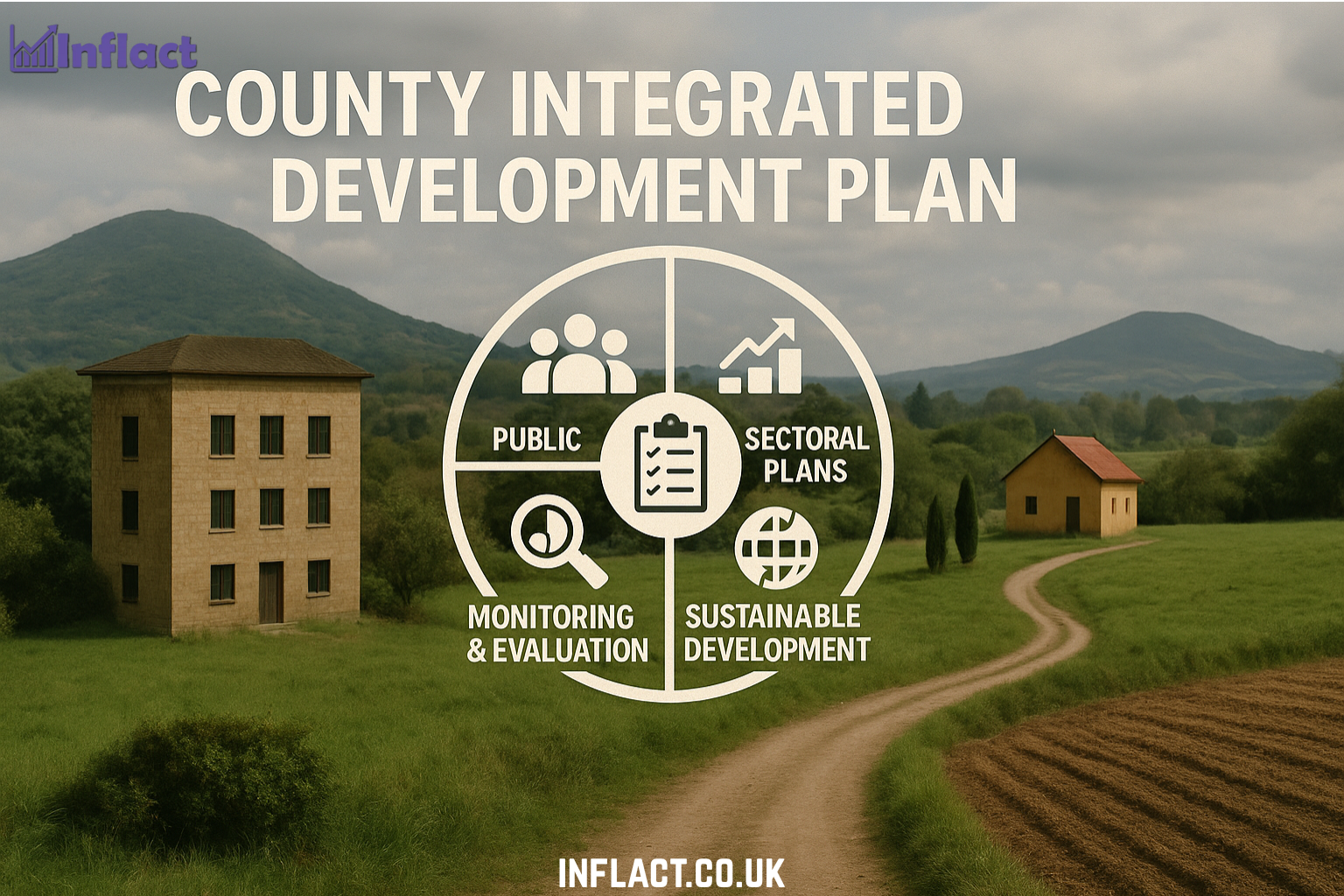Introduction
What is County Integrated Development Plan? This question is increasingly important as Kenya continues to deepen its system of devolved governance. At the heart of each county’s planning and development lies the County Integrated Development Plan (CIDP) — a strategic, five-year blueprint that guides how counties prioritize projects, allocate resources, and improve service delivery. The CIDP is more than just a document; it is the foundation upon which local development thrives.
In this article, we’ll break down what the CIDP is, why it matters, how it’s developed, and what it means for communities across Kenya.
Understanding What Is County Integrated Development Plan
A County Integrated Development Plan (CIDP) is a five-year development roadmap prepared by each of Kenya’s 47 county governments. Legally required under the County Governments Act (2012), the CIDP outlines a county’s development priorities, goals, projects, and budget plans. It ensures that all county activities are planned, funded, and executed in a structured and accountable manner.
The CIDP brings together economic, social, environmental, legal, and spatial planning into one comprehensive framework, ensuring coordinated development at the county level.
Also Read: Educators Handbook: A Modern Tool for Classroom and Behavior Management
Main Components of a CIDP
County Profile and Baseline Information
Each CIDP starts with a detailed county profile, including data on population, natural resources, infrastructure, and economic activities. This helps identify development needs and set realistic goals.
Strategic Vision and Development Goals
The CIDP lays out the county’s long-term vision, mission, and goals that align with Kenya Vision 2030, the Big Four Agenda, and other national development frameworks.
Sector Plans
CIDPs divide development into sectors such as:
- Health
- Education
- Agriculture
- Roads & Infrastructure
- Water & Sanitation
Each sector has specific targets and strategies.
Flagship Projects and Budget Projections
Major development projects are listed, along with estimated costs and funding sources. These include roads, hospitals, schools, ICT hubs, and more.
Monitoring and Evaluation (M&E) Framework
CIDPs must include a robust plan for tracking performance, assessing impact, and adjusting strategies to improve effectiveness.
Legal Foundation and Policy Alignment
Understanding what is county integrated development plan also means knowing its legal basis. The CIDP is mandated under:
- The Constitution of Kenya (2010)
- County Governments Act (Section 108)
- Public Finance Management Act (PFMA)
Each CIDP must align with:
- National Medium-Term Plans
- Sustainable Development Goals (SDGs)
- Kenya Vision 2030
This ensures counties don’t work in isolation but contribute to national development.
Public Participation in the CIDP Process
One of the most important aspects of what is county integrated development plan is its commitment to public participation. Community involvement ensures that the CIDP reflects real, grassroots priorities.
How public participation is conducted:
- Town hall meetings in sub-counties and wards
- Feedback from youth, women, elders, and special interest groups
- Civil society and private sector consultations
This inclusive process builds ownership, trust, and transparency in local governance.
Step-by-Step Guide to Developing a CIDP
Understanding the development process of the CIDP is crucial to grasp what is county integrated development plan. Here’s a simplified breakdown:
Step 1: Situation Analysis
Analyze current challenges, opportunities, and resources across all sectors.
Step 2: Public Consultations
Engage communities and stakeholders to gather input.
Step 3: Drafting
Plan goals, programs, projects, and performance indicators.
Step 4: Validation
Share the draft CIDP for public and technical validation.
Step 5: Approval
Submit the final CIDP to the County Assembly for approval.
Step 6: Implementation and Review
Roll out the plan with regular monitoring, annual reports, and mid-term reviews.
Benefits and Challenges of CIDP Implementation
Benefits:
- Guides long-term development and investment decisions
- Improves accountability and transparency
- Encourages public engagement in local governance
- Aligns with national and international development goals
Challenges:
- Budget constraints and overambitious project lists
- Weak monitoring systems
- Political interference
- Limited technical capacity in counties
Also Read: GU iCloud: Transforming University Education Through Cloud-Integrated Academic Management
Conclusion
So, what is county integrated development plan in simple terms? It is a legally mandated, five-year development blueprint that ensures counties in Kenya implement well-structured, community-driven, and results-oriented development programs. It empowers local governments to plan based on data and citizen needs, improving service delivery and accountability.
Citizens, civil society, and government agencies all have roles to play in making CIDPs successful. By understanding and participating in this process, communities help shape their own development futures.
Frequently Asked Questions (FAQs)
1. What is county integrated development plan and who prepares it?
It is a five-year plan prepared by county governments to guide local development. It’s created by county planning teams under the leadership of the governor, with public input.
2. How is the CIDP different from the Annual Development Plan (ADP)?
The CIDP is a five-year strategic plan, while the ADP is a yearly plan derived from the CIDP to guide short-term budgeting and implementation.
3. Why is public participation important in CIDP creation?
Public involvement ensures that development priorities reflect real community needs, building ownership and transparency.
4. Can I access my county’s CIDP online?
Yes, most counties publish their CIDPs on their official websites. You can also check with the Council of Governors or Ministry of Devolution.
5. How does the CIDP help in county budgeting?
All county budgets, including the annual budget and Medium-Term Expenditure Framework (MTEF), must be aligned with the CIDP, ensuring coherence and focused resource use.




